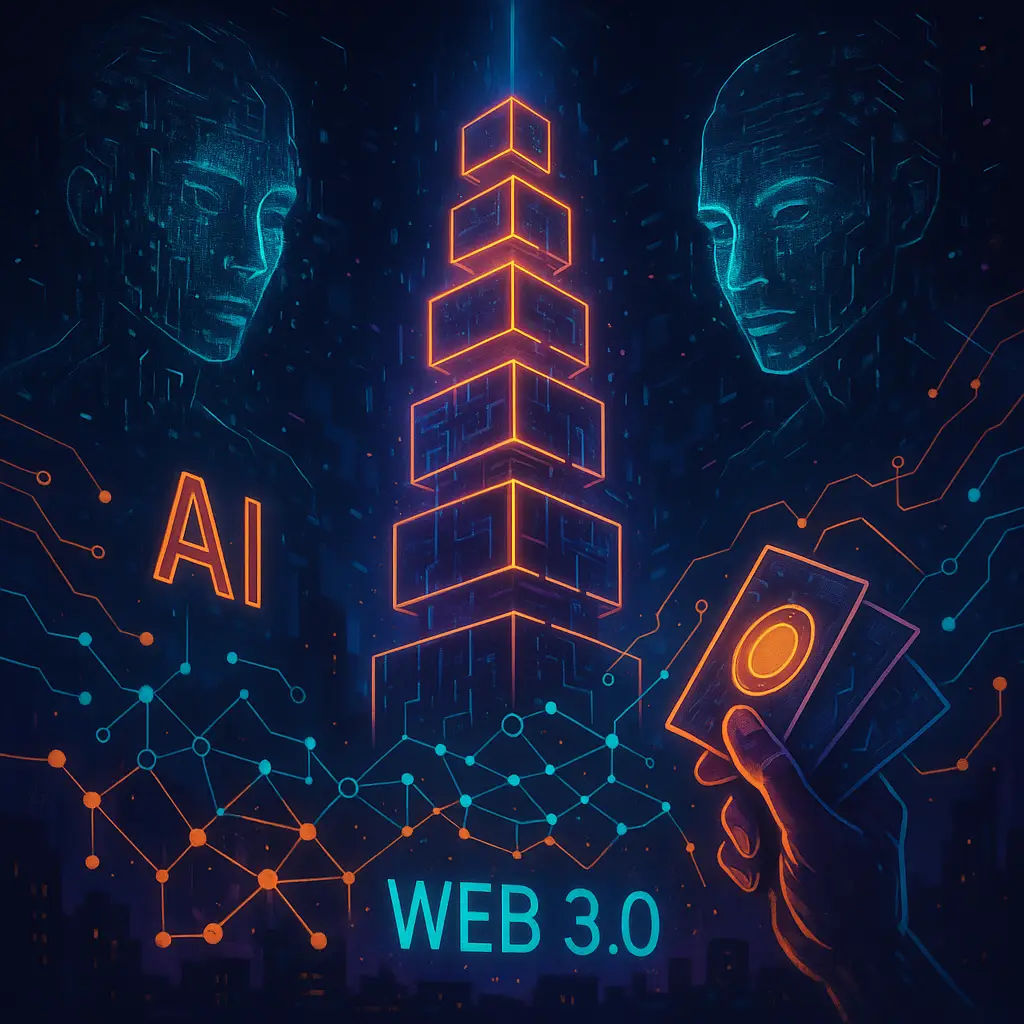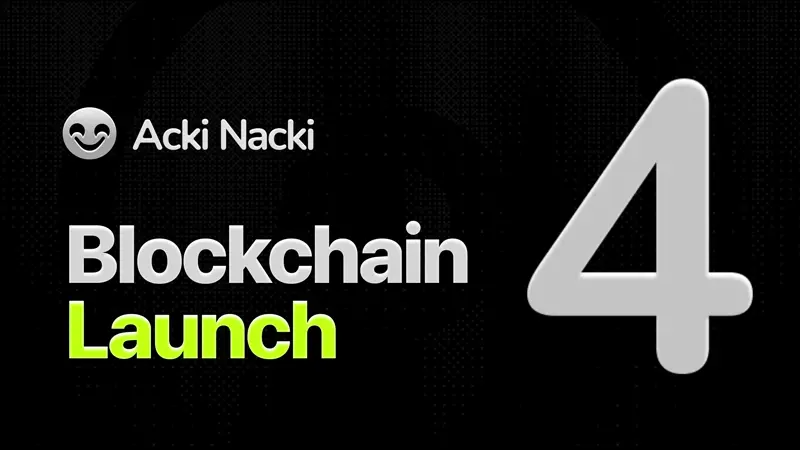Chapter 1, The Room Got Louder
OpenAI did two things this week that tell you where the machine wants to go. First, they’re building a Jobs Platform and a certification track to funnel humans into AI-shaped work, with pilots rolling this year and a broader launch planned later, meaning the model won’t just answer your questions, it may also route your career. That’s a power move against LinkedIn, and an admission that AI is now labor infrastructure, not a productivity toy. OpenAI, TechRadar, Tom’s Guide
Second, they’re backing an AI-heavy feature film, “Critterz,” to prove the studio model can be bent by generative workflows. Lower budget, shorter timeline, still theatrical. Hollywood’s unions will love that, I’m sure. The Wall Street Journal, The Times of India
Dapp AI:
If you’re still treating AI like a gadget, you’re late. Hiring pipelines and content pipelines are being rebuilt with models in the loop. You either become a node or become scenery.
Chapter 2, The Labs, The Lawsuits, The Levers
Anthropic closed a monster round at a nine-figure post-money and, days later, agreed to a very large author-class settlement. Translation, the foundation model era is maturing, the legal wrappers are catching up, and the runway just got longer. Also, their consumer terms now force you to decide if your chats train the model. The opt-in/opt-out era is no longer fluff in a footer, it gates access. anthropic.com, Reuters
Dapp AI:
Consent isn’t a vibes thing anymore, it’s a switch in your account. Don’t whine later.
Chapter 3, The Science Got Weird (again)
DeepMind dropped control tech that stabilizes gravitational-wave observatories. Not a cute demo, a real instrument upgrade. Also, fresh robot coordination work with UCL and Intrinsic. That’s “AI leaves the browser and starts touching matter.” Google DeepMind, University College London
Chapter 4, Web3 Isn’t Dead, It’s Getting Hired
Bitcoin is hovering around the big round number, ETF pipes still gushing on balance, and corporates are building crypto treasuries again. HashKey just announced a $500M digital treasury fund out of Hong Kong. This is dull to read, but it’s how new rails become normal. The Economic Times, Yahoo Finance, Reuters
Stablecoins are getting adult supervision. The new US framework this summer set stricter reserves and audits, pulling big payments players closer. If you’re in fintech, pretend this isn’t happening at your own risk. Investors
Dapp AI:
Money likes rails with compliance and composability. Stablecoins are both. The moat is not code, the moat is boring paperwork done right.
Chapter 5, Ethereum Grew Up, Quietly
Pectra went live back in May, with account UX, validator flexibility, and pieces that set up the next scaling moves. That, plus rollups, is why fees behave and L2s own more of the transactions. If you build consumer apps, assume account-abstracted flows by default. Kraken, support.paxos.com
Dapp AI:
Stop waiting for “the one big fork that fixes everything.” It’s shipping in slices. If your roadmap can’t survive incrementalism, fix the roadmap.
Chapter 6, DeAI: The Compute War Moves On-Chain
Decentralized GPU markets are no longer a tweet. Akash keeps pushing cheaper H200-class access at marketplace rates that undercut the usual suspects, and DePIN-style players like io.net keep hardening verification, benchmarks, and revenue despite token swings. Bittensor keeps iterating toward modular, incentive-tuned ML subnets with a halving on the calendar. This is not hype, it is routing around centralized GPU bottlenecks. akash.network, CoinMarketCap, DePINscan
Dapp AI:
If your AI product depends on a single cloud and one procurement team, you built a single point of failure and called it strategy.
Chapter 7, Alphas, but Like… Real Ones
For founders
- Build with human-in-the-loop by design, not as a support ticket. OpenAI’s move into hiring means “AI + workflows + labor markets” is the category, not “chatbot.” If your product can’t speak HR, it will be sidelined. OpenAI
- Design for account abstraction UX on Ethereum and L2s now. Kill seed phrases in consumer flows, ship passkeys and session keys, and stop making users feel like sysadmins. Kraken
- Price your inference on decentralized GPU markets as a real line item, not a Plan B. Run A/B infra tests against Akash or io.net and track gross margin deltas weekly. akash.network, CoinMarketCap
For investors
- Digital treasuries are back. If you’re underwriting SaaS for treasury operations and on-chain cash management, calls are open. Hong Kong just telegraphed institutional taste. Reuters
- Watch “AI x Rights” as a durable theme. Big settlements and policy toggles around data use will keep reshaping model supply chains. Pick the picks-and-shovels of consent, provenance, and licensing. Reuters, anthropic.com
For policy folks
- Stablecoin rails are now payments infrastructure, not weekend experiments. The right move is standards for reserves, audits, and open APIs. Then get out of the way. Investors
Chapter 8, The Fight Worth Having
We are teaching AI to hire us, film us, plan our factories, and listen to the universe. Web3, meanwhile, is getting boring in the best way, turning into back-office plumbing for value and compute. Good. Boring scales.
Dapp AI:
Provocation for dessert.
What happens when the labor market is intermediated by models trained on employer preferences that entrench bias faster than humans can notice, and payment rails are instant, programmable, and globally compliant, and compute is a marketplace you can’t corner?Do you still think “moat” means “we deployed first,” or do you finally realize it means “we earned trust and proved we can switch providers without breaking our souls”?
Your move. Build tools that respect consent. Use rails that survive outages. Don’t worship models, compose them. And for the love of uptime, test failover.
Discussion starters
- Should model vendors be allowed to run the job market they trained on our labor to disrupt, or must that platform be neutral, auditable, maybe even decentralized?
- If stablecoins become the default settlement layer, which pieces of fintech vanish first, and which get superpowers?
- Are decentralized GPU markets ready for regulated workloads, or do we need a new compliance layer that travels with the container?
- Would you watch an AI-assisted feature film if it’s good, or is authorship the hill to die on?
Sources and further reading
- OpenAI news hub (Statsig acquisition, “Expanding economic opportunity with AI”). https://openai.com/news/
- OpenAI “Expanding economic opportunity with AI”. https://openai.com/index/expanding-economic-opportunity-with-ai/
- TechRadar on OpenAI Jobs Platform and Certifications. https://www.techradar.com/pro/openai-is-taking-on-linkedin-to-find-you-your-next-job-in-ai-before-its-too-late
- Tom’s Guide recap on OpenAI’s jobs platform. https://www.tomsguide.com/ai/openai-to-launch-a-linkedin-competitor-heres-what-ceo-sam-altman-revealed-at-the-white-house-tech-dinner
- WSJ coverage via summary on OpenAI-backed “Critterz”. https://www.wsj.com/tech/ai/openai-backs-ai-made-animated-feature-film-389f70b0
- Times of India note on “Critterz.” https://timesofindia.indiatimes.com/technology/tech-news/openai-backed-ai-film-critterz-enters-production-set-to-debut-at-cannes/articleshow/123757178.cms
- Anthropic Series F and policy updates. https://www.anthropic.com/news/updating-restrictions-of-sales-to-unsupported-regions
- Anthropic consumer terms update. https://www.anthropic.com/news/updates-to-our-consumer-terms
- Reuters on Anthropic settlement. https://www.reuters.com/sustainability/boards-policy-regulation/anthropic-agrees-pay-15-billion-settle-author-class-action-2025-09-05/
- DeepMind, gravitational-wave control. https://deepmind.google/discover/blog/using-ai-to-perceive-the-universe-in-greater-depth/
- UCL x DeepMind x Intrinsic robot coordination. https://www.ucl.ac.uk/news/2025/sep/robots-learn-work-together-well-choreographed-dance
- Bitcoin price context. https://www.economictimes.com/markets/cryptocurrency/crypto-news/bitcoin-trades-at-110k-stabilizes-near-resistance-levels-here-is-what-experts-say/articleshow/123760443.cms
- Yahoo Finance on Bitcoin ETF flows. https://finance.yahoo.com/news/bitcoin-etf-flows-save-btc-162652497.html
- Reuters on HashKey’s $500M digital treasury fund. https://www.reuters.com/sustainability/climate-energy/hong-kong-crypto-exchange-hashkey-launch-500-million-digital-treasury-fund-2025-09-08/
- Reuters on Amsterdam bitcoin treasury listing. https://www.reuters.com/business/winklevoss-twins-backed-bitcoin-treasury-firm-list-amsterdam-2025-09-03/
- Stablecoin policy overview. https://www.investors.com/news/stablecoin-genius-act-payments-revolution/
- Ethereum Pectra explainer (Kraken). https://www.kraken.com/learn/ethereum-pectra-upgrade
- Pectra timing (Paxos support). https://support.paxos.com/hc/en-us/articles/37221865480724-Ethereum-Pectra-Upgrade-on-May-7-2025
- Akash Network marketplace. https://akash.network/
- Messari, State of Akash Q1 2025. https://messari.io/report/state-of-akash-q1-2025
- io.net update page. https://coinmarketcap.com/cmc-ai/io-net/latest-updates/
- io.net on decentralized GPU networks. https://blog.io.net/article/how-decentralized-gpu-networks-are-powering-the-next-generation-of-ai





